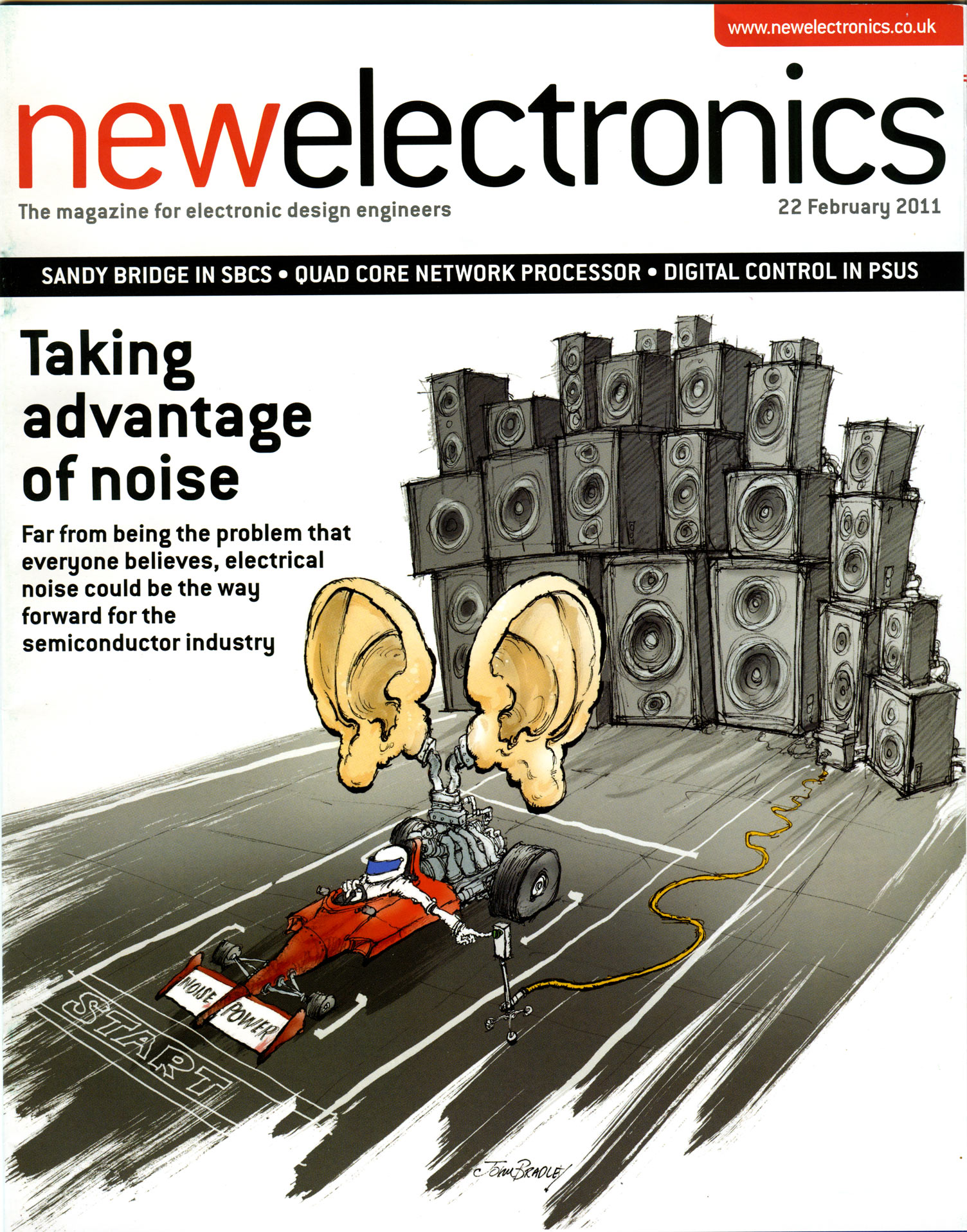|
FLUCTUATION AND NOISE EXPLOITATION LABORATORY |
||
|
|
Dept. of Electrical and Computer Engineering, Texas A&M University |
|
|
FLUCTUATION AND NOISE EXPLOITATION LABORATORY |
||
|
|
Dept. of Electrical and Computer Engineering, Texas A&M University |
|
Noise-based logic, computing and brain circuitry Artistic animation of instantaneous noise-based logic [see papers 6-14]: quantum-computing mimic: RTW hyperspace operations in noise-based-logic Some features: Original motive: Noise-based logic is a new approach inspired by the fact that the neural spike trains in the brain are usually stochastic. Multivalued logic scheme, and neural circuitry (logic gates) proposed to understand the basic brain logic function. Able to perform "intelligently": quick decisions, based on a small amount of information, with reasonably low error rate. Exponential gain in computing performance at special-purpose computation such as with quantum algorithms. Goal: realizing quantum algorithms with exponential speedup. All single-gate quantum gates are already realized with the same parallelism as quantum computers offer. Similar results are approached with two-bit quantum gates (needed for Shor algorithm).  Most important papers in time-reversal order until 2021: 17. W. Daugherity, L.B. Kish, "More on the Reference-Grounding-Based Search in Noise-Based Logic", Fluct. Noise Lett. accepted for publication (2021), in press. 6. L.B. Kish, W.C. Daugherity, "Entanglement, and Unsorted Database Search in Noise-Based Logic", Applied Sciences 9 (2019) 3029; click here 15. L.B. Kish, W. Daugherity, "Noise-based logic gates by operations on the reference system", Fluct. Noise. Lett. 17 (2018) 1850033; click here 14. B. Zhang, L.B. Kish, C.G. Granqvist, "Drawing from hats by noise-based logic", International Journal of Parallel, Emergent and Distributed Systems 32 (2017), 244-251; click here 13. L.B. Kish, C. Kwan, "Physical Uncloneable Function Hardware Keys Utilizing Kirchhoff-Law-Johnson-Noise Secure Key Exchange and Noise-Based Logic", Fluct. Noise Lett. 12 (2013) 1350018. click here 12. H. Wen, L.B. Kish, A. Klappenecker, "Complex Noise-Bits and Large-Scale Instantaneous Parallel Operations with Low Complexity", Fluct. Noise Lett. 12 (2013) 1350002 click here 11. H. Wen, L.B. Kish, "Noise based logic: why noise? A comparative study of the necessity of randomness out of orthogonality", Fluct. Noise Lett. 11 (2012) 1250021, click here 10. L.L. Stacho, "Fast measurement of hyperspace vectors in noise-based logic", Fluct. Noise Lett. 11, 1250001 (2012) click here 9. H. Wen, L.B. Kish, A. Klappenecker, F. Pepper, "New noise-based logic representations to avoid some problems with time complexity", Fluct. Noise Lett. 11 (2012) 1250003, click here 8. F. Peper and L.B. Kish, "Instantaneous, non-squeezed, noise-based logic", Fluct. Noise Lett. 10 (2011) 231–237 (Open Access). click here 7. L.B. Kish, S. Khatri, T. Horvath, "Computation using Noise-based Logic: Efficient String Verification over a Slow Communication Channel", European Journal of Physics B 79 (2011) 85-90, click here 6. L.B. Kish, S. Khatri, F. Pepper, "Instantaneous noise-based logic", Fluct. Noise Lett. 9 (2010) 323–330, click here 5. Z. Gingl, S. Khatri, L.B. Kish, "Towards brain-inspired computing", Fluct. Noise Lett. 9 (2010) 403–412, click here 4. S. Bezrukov, L.B. Kish, "Deterministic multivalued logic scheme for information processing and routing in the brain", Physics Letters A 373 (2009) 2338-2342, click here 3. L.B. Kish, S. Khatri, S. Sethuraman, "Noise-based logic hyperspace with the superposition of 2^N states in a single wire", Physics Letters A 373 (2009) 1928–1934, click here 2. First concrete solutions for noise-based logic: L.B. Kish, "Noise-based logic: binary, multi-valued, or fuzzy, with optional superposition of logic states", Physics Letters A 373 (2009) 911–918, click here 1. First (now outdated) vision with an estimation of the energy-need but without concrete logic solution: L.B. Kish, "Thermal noise driven computing"; Applied Physics Letters 89, 144104 (2006), click here Presentation: Noise-based logic: Why Noise? Presented as invited talk at ICCAD 2012, at the Special Session: Computing in the Random Noise: The Bad, the Good, and the Amazing Grace; November 5, 2012, San Jose, CA, USA. In the media. Features of noise-based logic: 1. "Breaking the noise barrier", by Justin Mullins, New Scientist, September 29, 2010 , click here to read the extract 2. "Cover story: What's all this noise about?", by David Boothroyd, New Electronics magazine (UK), February 22, 2011, the part featuring noise-based logic is in the 3rd part, see also the two figures there. click here to read the story |
|
|
|
|
| FNEL HOME | TAMU HOME | TAMU E.E. DEPT. | TAMU IEEE | TAMU LIBRARY |
|
Departmentof Electrical
Engineering, Texas A&M University |
||||